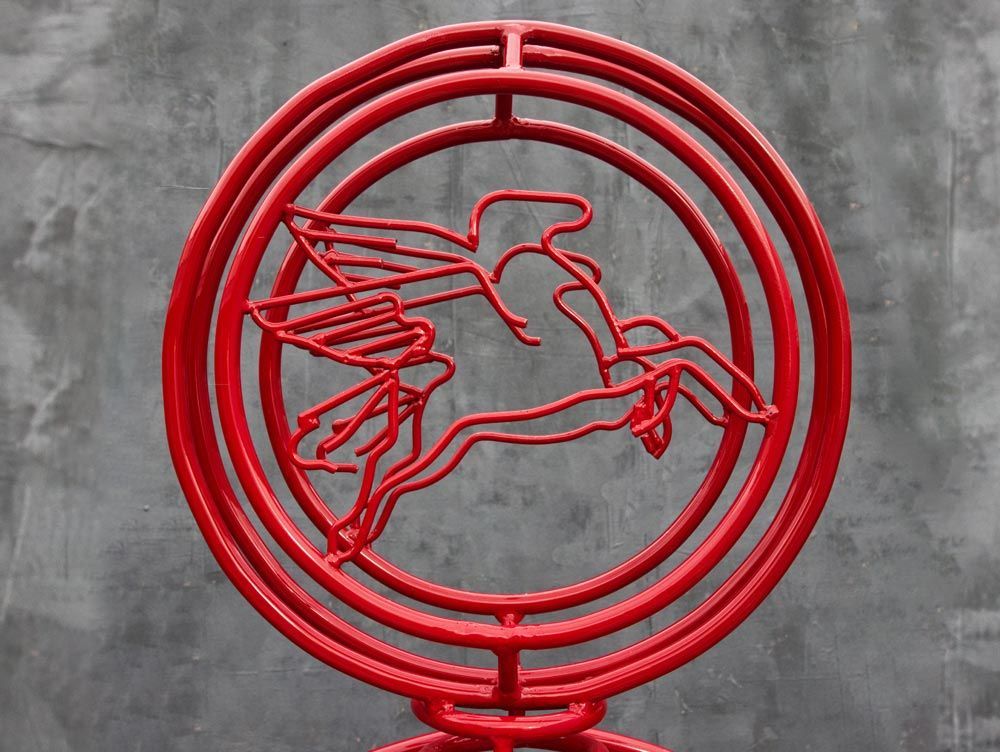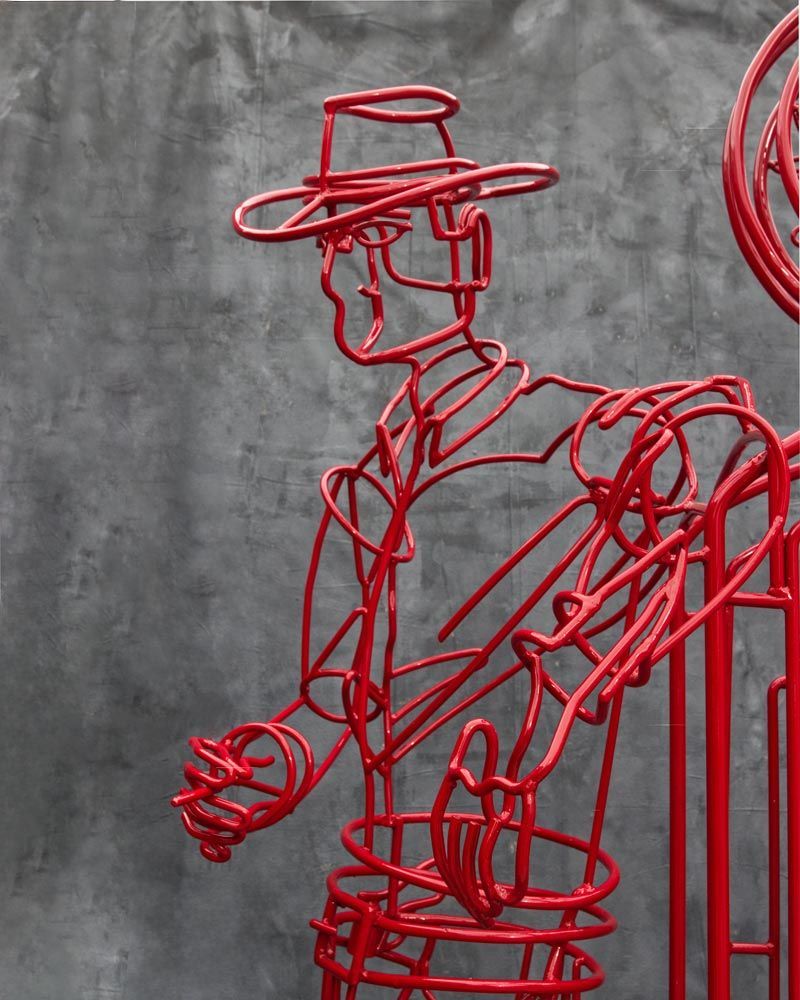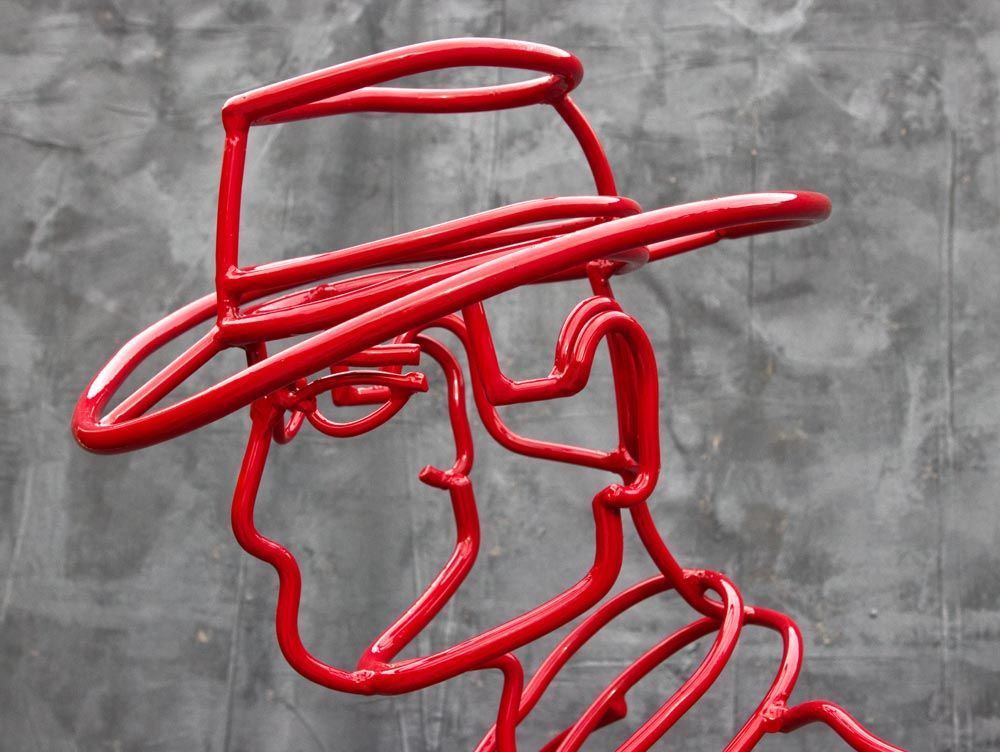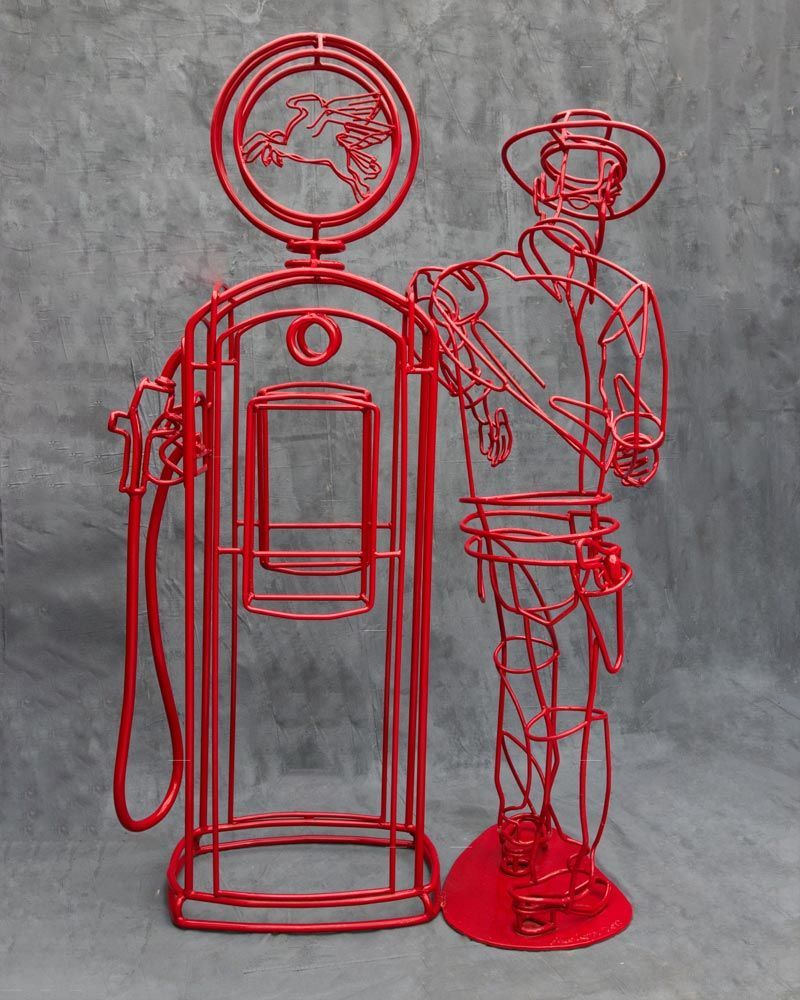American Elegy
American elegy is a depiction of a vintage gas pump and a cowboy. Both evoke a sense of American nostalgia through the use of iconic images.
In the height of the great depression Grant Wood and Thomas Hart Benton used nostalgic imagery of mid-western America to depict an idealized national mythology with an undercurrent of disquieting unease on the verge of a second world war. A few decades later Edward Hopper and later still Edward Ruscha used american imagery, including gas stations, as uneasy cultural sentinels on the threshold of change. (include images on line or from my books)
Cowboys symbolise the American west and have been mythologized as representations of freedom and open spaces. (include images of Remignton’s art, Andy Worhol cowboy) movies like John Wayne, TV Gunsmoke show, Children playing cowboys and indians. For almost a century they were the toys that informed our patriarchal national identity. (include plastic toy pictures etc.) In this sculpture the cowboys horse is replaced by a pegasus-the mythologic vehicle of the forgotten god Persius and corporate logo of a dying industry. The pump alludes to cars and open road; yet, an absence and isolation is felt in conspicuous absence of both. The cowboy and the petro-chemical industrial revolution that moulded American culture are dying myths. The cowboy holds a lit cigarette next to a gas pump. The entire sculpture is stop-sign red existing exclusively as line and shadow in a liminal state between a nostalgic past and uncertain future. The viewer confronts the death of a 20th century collective mythology. Lifesize but constructed in thin steel line it feels transient, tenuous and transparent in its hold on space. The gas pump, in the shape of a tombstone, retains a figurative presence equal to the cowboy both connected in their dissolution on the verge of a new and different mythology.

All Rights Reserved | Scott Runion. Privacy Policy | Cookie Policy





